
 |
|
|
Corn
Volume 58 Number 17 Date 08/29/2013 CORN EARWORM - A major migration of corn earworm moths is in progress. Counts at the Byron and Green Lake trapping sites increased to 428 and 613 moths per trap in the past week, while counts of 93-227 per trap were registered at sites in Dane and Chippewa counties. Larvae of various maturities can be found statewide. Surveys of corn in Buffalo, Chippewa, Clark, Dunn and Waupaca counties found moderate to severe infestations of 10-31% in a few fields. Most earworms were in the intermediate to late instars, although a few were very small. Sweet corn growers should continue to monitor fields for egg laying as long as moth activity persists and green silks are present. Counts this week were: Byron 428, Chippewa Falls 93, Coon Valley 12, Cottage Grove N 19, Green Lake 613, Janesville 0, Marshfield 0, Mazomanie 4, McFarland 214, Ripon 125, Sun Prairie N 310, Sun Prairie W 22, Wausau 2, and Watertown 93. CORN ROOTWORM - Results of the statewide beetle survey indicate populations are lower than last year in the southern and central crop reporting districts and higher in the northwest region. District averages across the southern and central areas ranged from 0.2-0.8 per plant and compare to averages of 0.4-0.9 per plant last year. The most significant decrease was documented in the central counties where the average decline from 0.5 to 0.2 per plant, while the average in the northwest increased from 0.5 to 0.7 per plant. As of August 29, economic counts of 0.75 or more beetle per plant have been found in 38 of 213 (18%) fields surveyed, which is lower than the five-year average of 25%. Final survey results will be published in the November summary issue of the Bulletin or may be requested earlier by emailing krista.hamilton@wisconsin.gov. WESTERN BEAN CUTWORM - Damage to corn was noted this week in Buffalo, Chippewa and Clark counties, where an estimated 2-6% of ear tips were infested with late-instar larvae. Most of the population is advanced and should enter the pre-pupal stage by early September. A few late moths are still appearing in traps but the flight has basically ended. The 2013 trapping survey documented the smallest flight in in the nine-year history of the program, collecting only 655 moths in 117 traps (average of six moths per trap). EUROPEAN CORN BORER - Second generation larvae range from second- to fifth-instar in the southern and west-central counties. Larval infestations affecting 10-23% of the ears have been reported in a few late-planted sweet corn fields, but most sites appear to have had adequate control. Nearly all of the older larvae present by mid-August will enter diapause and will not pupate until next spring. -- Krista Hamilton, DATCP Entomologist 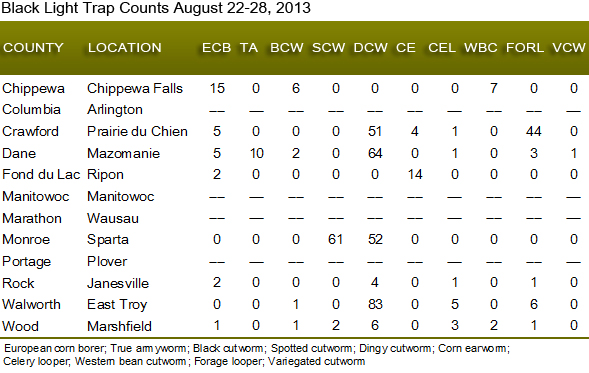

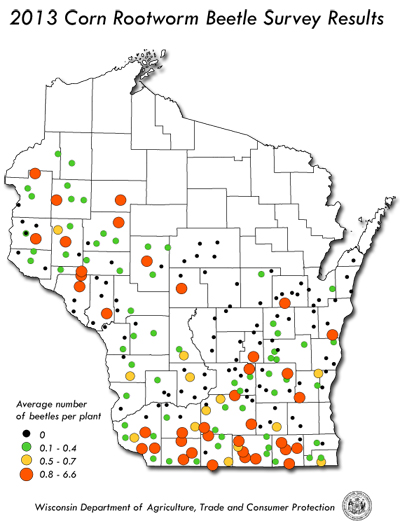
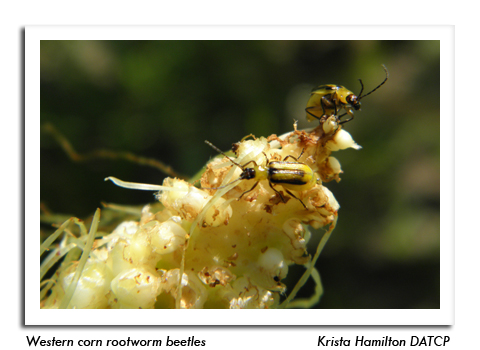
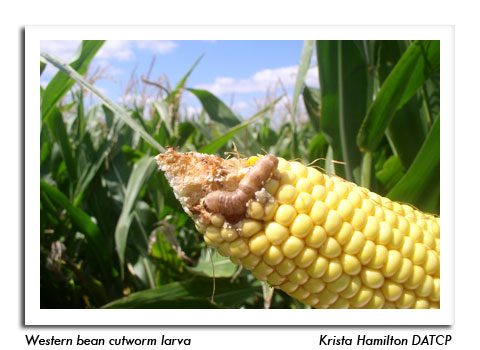
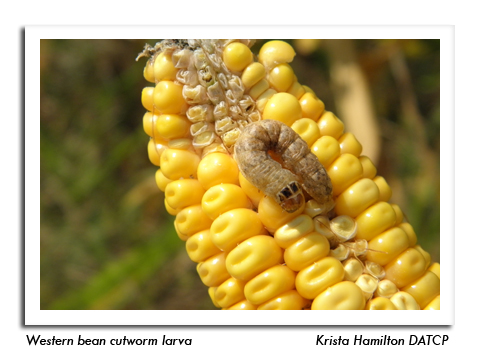
|
|
|